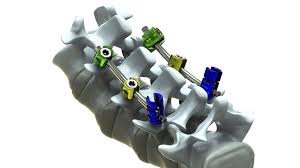
Screw application in spine surgery has become a serious preoccupation for our patients as well. Because the surgeries in which these procedures, which we call instrumentation, are performed, have increased considerably. First of all, let’s briefly describe what we are talking about: the removal of the slips between the spinal bones, the movements that disrupt the balance and cause serious complaints, by placing screws on the vertebral bones.
We know that when our patients apply to physicians with low back MRI, they may encounter very different recommendations. And hearing different opinions from other doctors can be exhausting and distrustful. When this is the case, our patients do not know where and how to seek a remedy, and they may give up treatment altogether. They are right..
So at this point, we need to inform our patients more; We need to put the situation clearly on our side. In what situations, when and how instrumentation and screw applications should be applied in spine surgery can also be a matter of discussion for neurosurgeons. Some of our colleagues are very distant to these applications and prefer to provide solutions to many problems with smaller transactions. In this context, closed methods such as endoscopy, epiduroscopy, laser application and nucleoplasty are also developing and becoming popular. These “minimally invasive methods” will be the subject of another article later. Some of our colleagues, on the other hand, can perform screw-related operations more frequently by keeping the balance element in spine mechanics in the foreground. Because in some rare cases, the stabilization of the spine can be impaired without any significant shift and screw application is required.
Of course, these differences arise not only from the knowledge and experience of physicians, but also from the unique characteristics of each patient. The complex structure of the spine and the diversity of its balance elements, the patient’s age, weight, wear rate, muscle strength, concomitant diseases, etc. When combined with many factors, conflicting ideas can emerge. At this point, detailed examination of the clinical picture, which includes the characteristics of the complaints and examination findings, is of great importance in the evaluation of patients.
We have more methods than ever before to provide maximum benefit to our patients. In order to use them in the most effective way, it is key that we communicate well with our patients and fully understand their problems.

